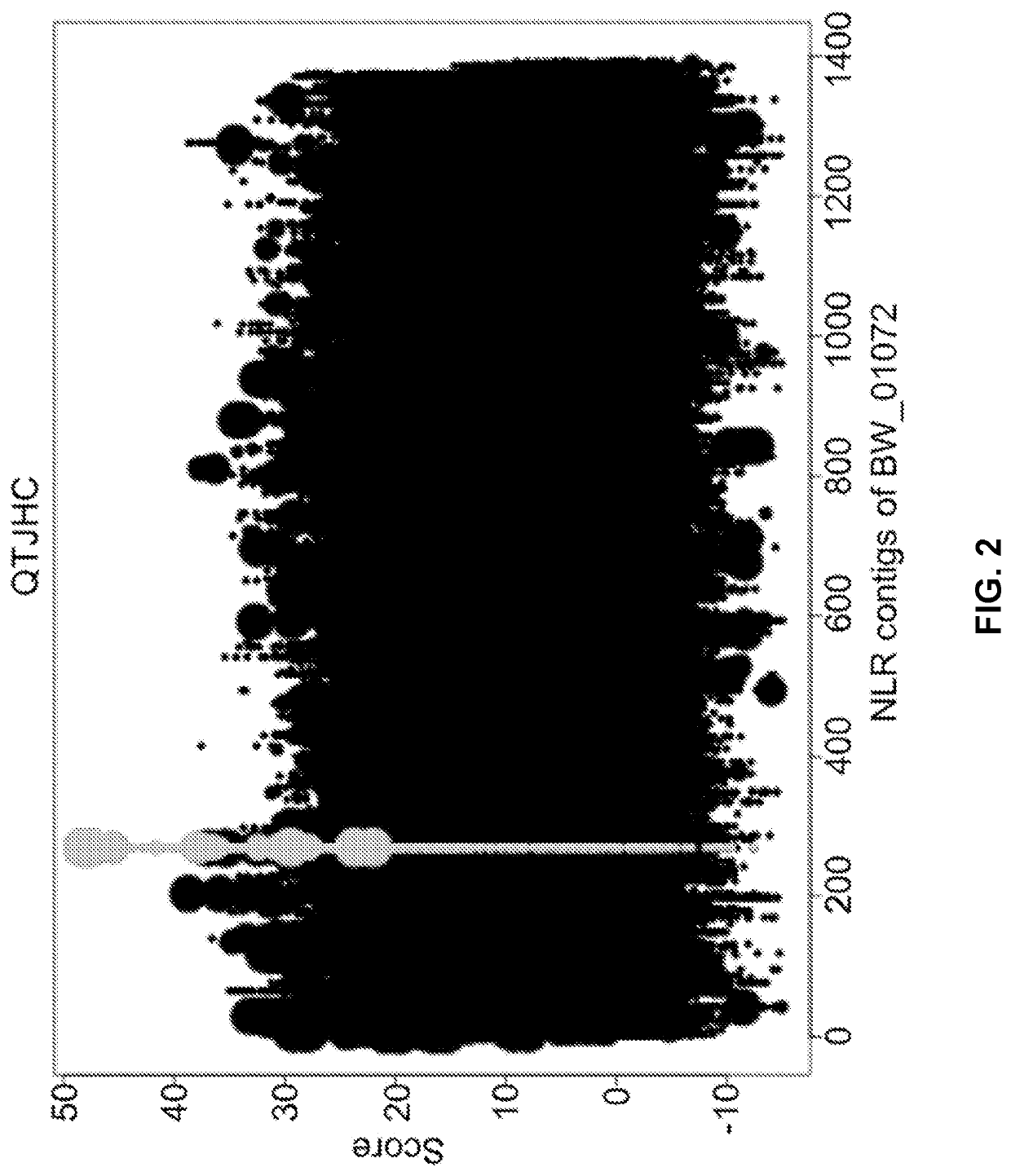Stem rust resistance genes and methods of use
a technology of rust resistance and stem cells, applied in the field of gene isolation and plant improvement, can solve the problems of significant yield loss in world-wide wheat production, and high cost of pesticides
- Summary
- Abstract
- Description
- Claims
- Application Information
AI Technical Summary
Benefits of technology
Problems solved by technology
Method used
Image
Examples
embodiment 1
2. The nucleic acid molecule of embodiment 1, wherein the nucleic acid molecule is an isolated nucleic acid molecule.
3. The nucleic acid molecule of embodiment 1 or 2, wherein the nucleic acid molecule of (c) or (d) encodes a protein comprising a coiled-coil domain, a nucleotide-binding domain, and a leucine-rich repeat domain.
embodiment 3
4. The nucleic acid molecule of embodiment 3, wherein at least one of the coiled-coil domain, the nucleotide-binding domain, and the leucine-rich repeat domain comprises an amino acid sequence having at least 95%, 96%, 97%, 98%, 99%, or 100% to the corresponding domain in SEQ ID NO: 11.
5. An expression cassette comprising the nucleic acid molecule of any one of embodiments 1-4 and an operably linked heterologous promoter.
6. A vector comprising the nucleic acid molecule of any one of embodiments 1-4 or the expression cassette of embodiment 5.
embodiment 6
7. A vector of embodiment 6, further comprising an additional wheat stem rust resistance gene.
PUM
| Property | Measurement | Unit |
|---|---|---|
| resistance | aaaaa | aaaaa |
| nucleic acid | aaaaa | aaaaa |
| size | aaaaa | aaaaa |
Abstract
Description
Claims
Application Information
 Login to View More
Login to View More - R&D
- Intellectual Property
- Life Sciences
- Materials
- Tech Scout
- Unparalleled Data Quality
- Higher Quality Content
- 60% Fewer Hallucinations
Browse by: Latest US Patents, China's latest patents, Technical Efficacy Thesaurus, Application Domain, Technology Topic, Popular Technical Reports.
© 2025 PatSnap. All rights reserved.Legal|Privacy policy|Modern Slavery Act Transparency Statement|Sitemap|About US| Contact US: help@patsnap.com


